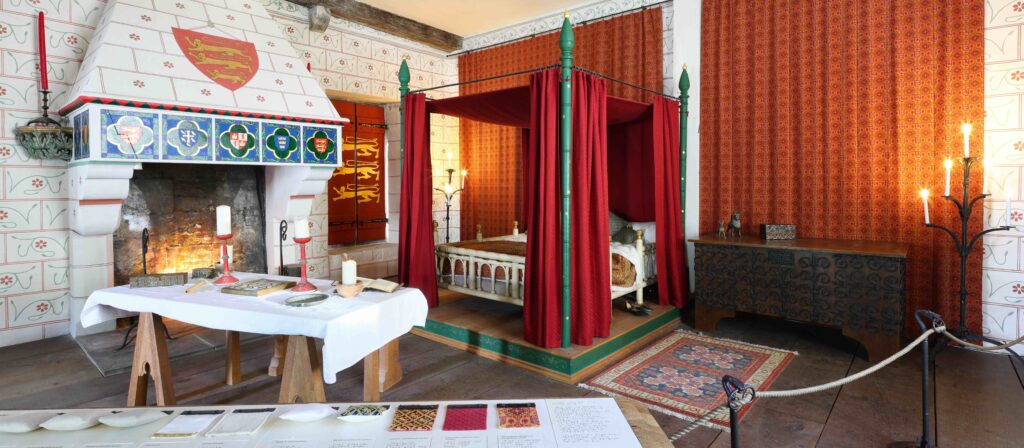There are few locations so synonymous with London’s royal history than the Tower of London, and few time periods that live so readily in England’s imagination as the medieval period.
Inaugurated under the Norman king William the Conqueror, with the building of the White Tower fort dating from 1078 at the centre of the complex, the Tower of London was expanded over the coming centuries, and the recently opened Medieval Palace was built by King Henry III (1216-72) and his son Edward I (1272-1307).
It was these interiors that would have welcomed each monarch when they came to stay on royal visits. Now Historic Royal Palaces, which runs the Tower of London, has refurbished these rooms to evoke 13th-century royal life.

Walking through the revamped halls of the Medieval Palace, housed in St Thomas’s Tower, the Wakefield Tower and the Lanthorn Tower, a steady stream of tourists open shutters and peer out onto the River Thames, imagining what life would have been like for those that lived and held court there, and what the traitors were thinking as they were delivered through the gate by boat directly below.
The reinvented spaces have been accessibly curated for the tower’s very international audience of tourists from around the globe. Complex themes are simplified, and large spaces are left open so that crowds have ample room to move and breathe.
King Edward I’s bedroom holds a replica bed with textile samples available for visitors to examine – the shining woven threads are accurate reimaginings of textiles of the time.
Tiny details like these really show how much enthusiasm the team at the tower has for historically accurate depictions. Take the first room. Here, medieval dye processes and weaving techniques have been used to create tapestries that drape from the walls. But it’s not just the standout features in the room that have been selected with such care – the team have meticulously pored over every detail, including a roped off area littered with architectural plans, all with the obligatory candles and pots of ink scattered around to evoke the time period.
There are modern, accessible touches too: a sensory plan of the Medieval Palace stands out in bright red, texturally detailing the complex’s key features and flanked by simple text, as well as its braille translation.
It’s this bridge between the modern and the medieval that stands out most. Interpretation is decorated with sketches influenced by medieval manuscripts, which speak to the building’s 700-year history while acting as an accessible storytelling device that transcends language.
The Wakefield Tower, previously a brief stop-off point for visitors to admire the vaulted ceiling before quickly moving on, has been updated to provide key points of historical import. Now, two large boards provide short poems detailing what it is that makes a “good” ruler, hopefully enticing visitors to pause for a while and take in the space within its broader context.
Accompanied by the sound of Latin chants in Edward I’s bedside chapel, or by lilting French conversation from an imagined space beyond a tapestry, the sounds of chatter from flocking guests create a happy chorus, testament to the hard work that has gone into this development, and echoing the voices of all those who surrounded the medieval kings of England as they held court, presided over criminals, lived and banqueted.
Daisy Finch is a freelance writer
Admission to the Tower of London is free for Museums Association members. For non-members it is £35.80 for an adult, £17.90 children 5-15 years old, £28.50 for concessions and 65+
Enjoy this article?
Most Museums Journal content is only available to members. Join the MA to get full access to the latest thinking and trends from across the sector, case studies and best practice advice.
Join
link

